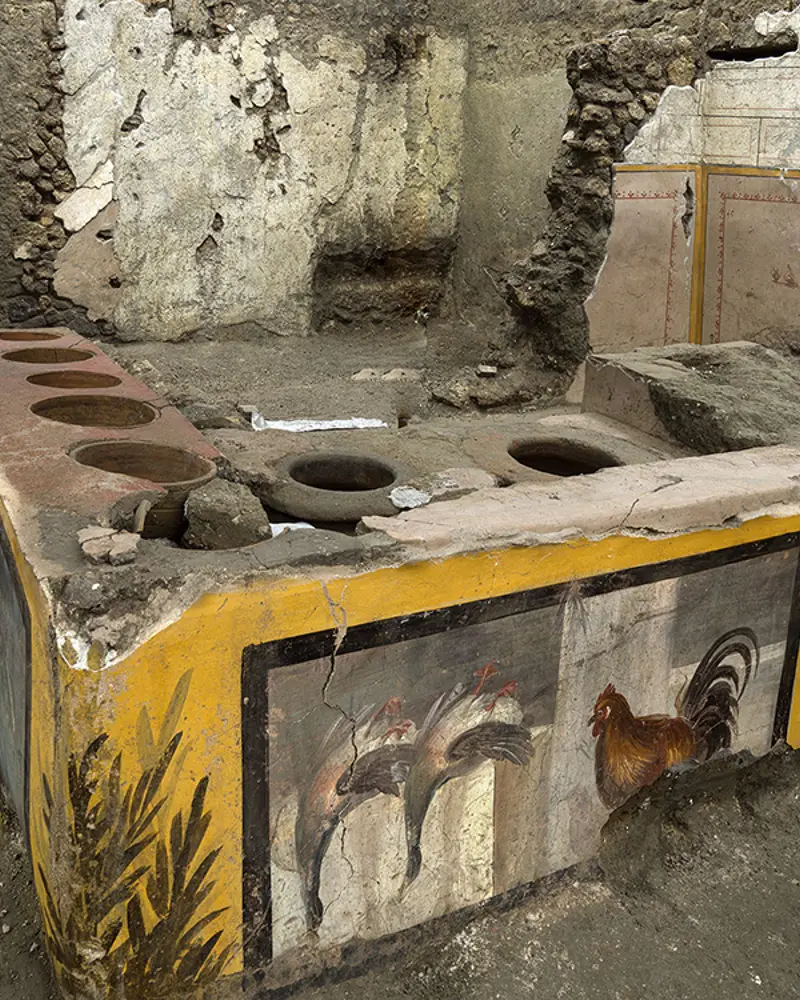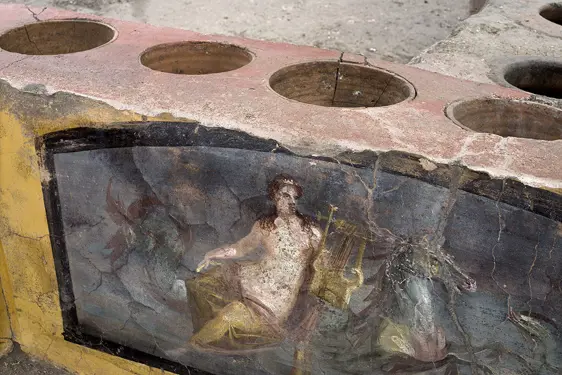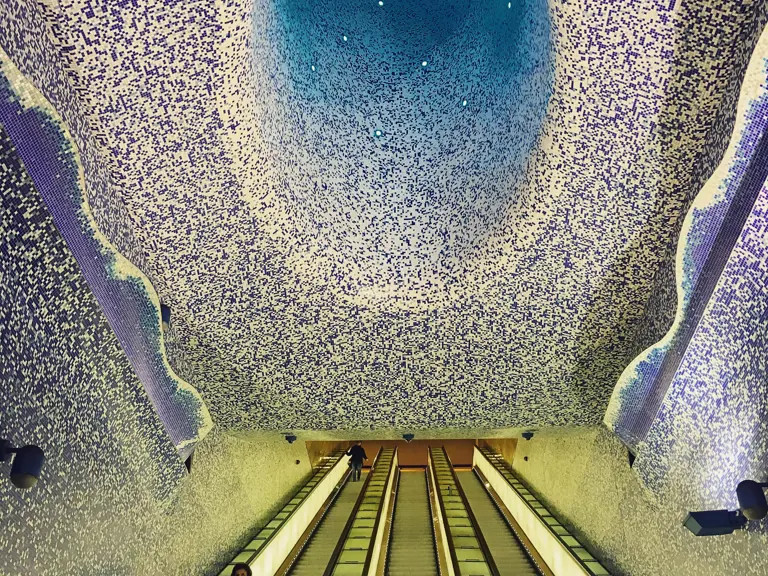STREET FOOD, POMPEII STYLE
29.12.2020 NAPLES & AROUND
On 26 December, Massimo Osanna revealed newly excavated sections of a thermopolium or snack bar that stood on one of the Roman city’s busiest downtown piazzas.
Thermopolium literally means ‘hot shop’, and that’s just what these simple culinary establishments were: places where hungry locals and workers could grab a bite of something hot to eat. They were typically frequented by a city’s poorer inhabitants, most of whom lived in cramped quarters in high-rise blocks, with no access to a kitchen, and only the most rudimentary of facilities for preparing food.
There were no less than eighty thermopoliums in the Pompeii of the first century AD, two of them on this single, small urban square. Just like today’s snack bars, they were keenly aware of the power of marketing. The latest excavations at the ‘Thermopolium of Regio V’ have revealed vivid wall paintings below the counter that were designed to be seen from the street. The place seems to have specialised in poultry, rather like a modern Italian rosticceria, and it flagged its speciality in a panel that shows two mallards hanging upside-down from the ceiling and another depicting a very fine cockerel.

Someone has scratched a mocking phrase onto the frame of the guard-dog panel, branding a certain ‘Nicias’ as a pederast and a “shitter”. It’s a puerile gesture but, like the bill-of-fare murals, it brings the place to life. Could Nicias have been the owner of the thermopolium and the author of the inscription a disgruntled customer?

View
The various dishes of the day were stored in dolia (terracotta jars) that were embedded in the masonry counter, rather like drums of ice-cream in an old-fashioned gelateria. Analysis of the organic remains preserved inside the dolia have revealed what was cooking on the day in 79 AD when Vesuvius erupted with such devastating effect. Bones of ducks, pigs, goats and fish were found, alongside snail shells. A glass ‘dipper’ found inside one dolium reveals that it was used for storing wine – something confirmed by the fragments of beans discovered at the bottom. Beans in wine? The mystery is explained by Ancient Roman gourmet Apicius, whose gastronomic treatise De Re Coquinaria contains a recipe used “to clarify muddy wine”, which involved adding bean meal and egg whites to the wine, stirring vigorously, and leaving for a day. That it needed to resort to such tricks suggests that the wine served at the Thermopolium of Regio V may have been on the rough side.
Le Sirenuse Newsletter
Stay up to date
Sign up to our newsletter for regular updates on Amalfi Coast stories, events, recipes and glorious sunsets





